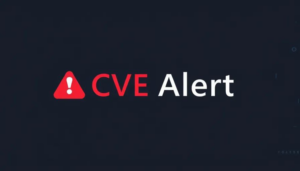CVE Alert: CVE-2025-9510 – itsourcecode – Apartment Management System
CVE-2025-9510
A security vulnerability has been detected in itsourcecode Apartment Management System 1.0. The affected element is an unknown function of the file /branch/addbranch.php. The manipulation of the argument ID leads to sql injection. The attack may be initiated remotely. The exploit has been disclosed publicly and may be used.
AI Summary Analysis
Risk verdict
High risk of remote SQL injection on a public-facing endpoint, with publicly disclosed exploit and PoC evidence; treat as priority for immediate attention.
Why this matters
Directly reachable by attackers, the flaw can leak or corrupt data from the database without user interaction or authentication. For organisations relying on the affected system for property management, this can translate into customer data exposure, operational disruption, and regulatory exposure if sensitive information is accessed or manipulated.
Most likely attack path
An unauthenticated attacker targets a vulnerable addbranch-like endpoint and injects crafted input (low complexity, network access). The vulnerability lies within the app’s SQL queries, enabling data leakage or modification without user consent. Because privileges required are none and the impact includes data and availability, successful exploitation could enable rapid one-shot or ongoing access within the same database scope.
Who is most exposed
Web deployments of the management system, especially those exposed directly to the Internet or poorly segmented networks, are at highest risk. Organisations with hosted or on-premises property-management portals that use common CMS/web app stacks are typical exposures.
Detection ideas
- Web logs show remote requests to the vulnerable endpoint with anomalous ID-like values.
- Database error logs or application logs reveal SQL syntax errors or unusual query patterns.
- Spike in 500/slow responses tied to the endpoint or repeated failed queries.
- IDS/IPS signatures or WAF blocks triggered by SQLi patterns.
- Unusual data-access patterns to branches or related tables.
Mitigation and prioritisation
- Patch to fixed version or apply vendor security update; verify patch effectiveness in staging before production.
- Enforce parameterised queries, input validation, and least-privilege DB accounts; disable direct ID-based query concatenation.
- Implement web application firewall rules to block SQL injection patterns; monitor for anomalous ID parameters.
- Restrict public exposure; require authentication for management endpoints; segment the app from core databases.
- If KEV is true or EPSS ≥ 0.5, treat as priority 1; otherwise escalate to high priority with expedited patch window and increased monitoring. Change-management: urgent patch cycle, verify post-patch logs and alerting.
A considerable amount of time and effort goes into maintaining this website, creating backend automation and creating new features and content for you to make actionable intelligence decisions. Everyone that supports the site helps enable new functionality.
If you like the site, please support us on “Patreon” or “Buy Me A Coffee” using the buttons below
To keep up to date follow us on the below channels.

![[Palo Alto Networks Security Advisories] PAN-SA-2025-0016 Chromium: Monthly Vulnerability Update (October 2025) 1 Palo_Alto_Networks_Logo](https://www.redpacketsecurity.com/wp-content/uploads/2025/02/Palo_Alto_Networks_Logo-300x55.png)

